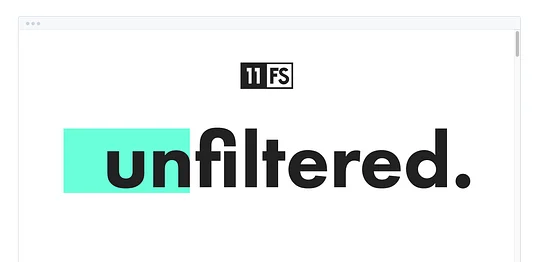Open banking regulators hold the key to an open finance future

Four years ago, policymakers in the UK and EU took the first steps to enshrine open banking into law, but now we’re at a turning point for digital adoption and the old ways of working aren’t working anymore.
It's about ten years since open banking really began to emerge and, in that time, many generations’ worth of innovation has occurred to the point where fintech is now more widely used than social media. Consumer demand needs regulators to rethink their approach to usher in the next phase of digital finance and ensure Europe continues to lead in fintech innovation.
Open banking may be law across the EU, but how it looks and is implemented varies widely from country to country. Some regulators watch the space closely but others treat it as a fifth or sixth priority. Ultimately, this discrepancy hurts consumers the most. People in the UK and the Netherlands have reliable access to digital financial tools more or less whenever they want, but people in countries like Italy are faced with painful customer experiences and, ultimately, fewer available use cases.
More than ever, it’s critical that people across Europe have equal, reliable access to open banking technology.
Due to the regulatory-led approach in Europe, banks are required to facilitate access to data they historically wouldn't have had to share - and do so for free. This means many banks still see PSD2 through a pure compliance lens and feel commercially shut out from the model. So they’re not particularly inclined to make this an easy experience. Their interests aren’t aligned with those of third-party providers, like open banking companies such as Plaid. But more than ever, it’s critical that people across Europe have equal, reliable access to open banking technology. This rears its head in several ways today that all need fixing in an open finance future:
Low API reliability: Even the frontrunner in open banking, the UK, has an API availability of 99.58% (with much lower rates seen across some European countries). This may sound like a high level of availability, but payments are about trust and having confidence that ‘it just works’. For reference, other payment businesses, such as Visa and MasterCard, aim for 99.999% availability and customers benefit from the certainty this brings.
Sub-standard Strong Customer Authentication journeys: Some banks currently subject consumers to multiple SCA steps, forcing them to manually open banking apps or direct themselves back to the application after they’ve completed authentication and authorisation - all unnecessary steps per the EBA’s published clarifications. These steps are outside of the control of the TPP but present major obstacles to people when trying to use open banking-based tools.
Slow / no support for issue escalation and resolution: With no central body or system to track and escalate issues in the individual markets (excl. UK) or across Europe, it can take months for a simple ticket with a bank to be resolved, or there are no responses whatsoever. This is not fair for consumers who rely on open banking for the most basic money management needs. Simple systems to report, track and measure issues across banks are required, with clear SLAs and non-adherence to these results in compliance penalties.
However, our open finance future doesn’t have to look like the open banking past. The next few years will be critical for digital finance. Economic pressures will drive people to adopt digital finance even more, with access to financial services critical in helping people and businesses to effectively manage their money, and companies looking to open banking for payments directly from bank accounts, rather than cards to reduce costs amid the downturn. Thankfully, the EU is deciding how PSD3 should look right now, creating an opportunity for policymakers to pressure institutions to implement PSD2 fully so it can function as an effective bedrock for open finance in the–hopefully–near future.
Banks and TPPs both want the best financial outcomes for people. With the help of regulators, we can work better together and deliver improved access to people’s financial data. Doing so will allow them to use it however they want to improve their financial planning, investing, saving for the future, and much more. That starts with ensuring banks are implementing PSD2 fully across all of Europe to resolve the issues above and make it easier for people to use the digital financial tools they rely on. The next phase is giving them access to more of their data, beyond just the payments data that PSD2 guaranteed access to.
On the account information side, open finance would enable consumers to get a 360-degree view of all of their financial information, from insurance and investments to utilities and savings. As a result, the ecosystem would see new apps and services emerge that provide use cases at scale, similar to what we see in North America. Services to help people detect and end predatory auto-renewals, fast, easy processes for switching service providers, and more autopilot ways to save and invest money. And that’s just the beginning.
When it comes to payment initiation, PSD3 and open finance could turn faster, easier, cheaper bank payments from a dream to reality via flexible recurring payments (VRP) across Europe. However, to be a success PSD3 needs to define VRPs more broadly than the UK’s VRP, place few to no limits on where the payment method could be used to drive innovation and better consumer outcomes. As a result, Europe could see new payment flows emerge that could disrupt nearly any repeat transaction–traditional utility bills, subscriptions, fuel purchases, and favourite e-commerce store.
The use cases that could emerge are almost limitless – many we can’t even imagine today.
Our unfiltered opinion
Digital financial services are the mainstream and people aren’t going to turn back. Now we need regulators to not turn their backs on the innovators they’ve helped foster over the years. The EU has come so far and truly paved the way for an open banking model for the world. In its next evolution, they can unlock open finance with broad data access and portability rights ensured across sectors and players. The use cases that could emerge are almost limitless – many we can’t even imagine today. We need the same policymakers to rise to the occasion and implement changes that allow developers to deliver better solutions for people at a faster pace when they need it most.




